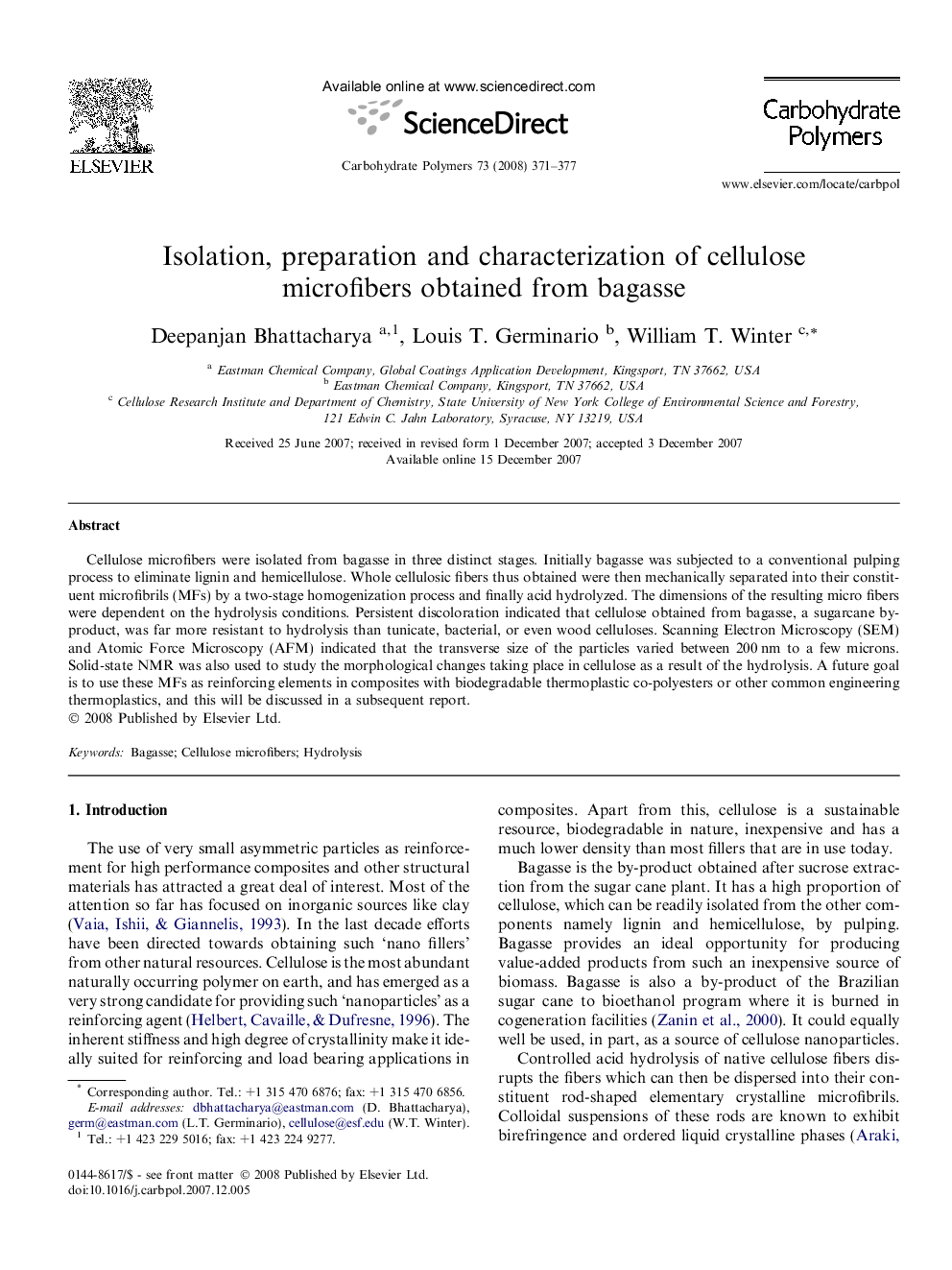| Article ID | Journal | Published Year | Pages | File Type |
|---|---|---|---|---|
| 1379344 | Carbohydrate Polymers | 2008 | 7 Pages |
Cellulose microfibers were isolated from bagasse in three distinct stages. Initially bagasse was subjected to a conventional pulping process to eliminate lignin and hemicellulose. Whole cellulosic fibers thus obtained were then mechanically separated into their constituent microfibrils (MFs) by a two-stage homogenization process and finally acid hydrolyzed. The dimensions of the resulting micro fibers were dependent on the hydrolysis conditions. Persistent discoloration indicated that cellulose obtained from bagasse, a sugarcane by-product, was far more resistant to hydrolysis than tunicate, bacterial, or even wood celluloses. Scanning Electron Microscopy (SEM) and Atomic Force Microscopy (AFM) indicated that the transverse size of the particles varied between 200 nm to a few microns. Solid-state NMR was also used to study the morphological changes taking place in cellulose as a result of the hydrolysis. A future goal is to use these MFs as reinforcing elements in composites with biodegradable thermoplastic co-polyesters or other common engineering thermoplastics, and this will be discussed in a subsequent report.
